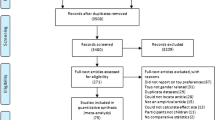Abstract
Lateralized hand use in gibbons was assessed for both food reaching and leading limb in brachiation. Sex and age effects were found in hand preference for food reaching. Adult females were all very strongly right hand preferent, whereas adult males had no across group consistent preference. Within the female group there was a strong correlation between age and strength of right handedness. When compared in terms of absolute strength of hand preference, females were found to be more strongly lateralized than males. Leading limb preference in brachiation was scored into vocal and non-vocal categories. Three subjects had a shift in preferred leading limb from the non-vocal brachiation condition to the vocal brachiation condition. This shift may be influenced by the arousal effects of species typical vocalization. The results of this study underline the importance of consideration of such factors as sex and age when interpreting behavioral lateralization data. The exploration of laterality in many different response measures is important to the achievement of a complete understanding of behavioral lateralization in primates.
Similar content being viewed by others
References
Annett, M., 1972. The distribution of manual asymmetry.Br. J. Psychol., 63: 343–358.
————, 1978. Genetic and nongenetic influences on handedness.Behav. Genet., 8: 227–249.
————, 1980. Sex differences in laterality—meaningfulness versus reliability.Behav. Brain Sci., 3: 227–228.
Collins, R. L., 1975. When left-handed mice live in right-handed worlds.Science, 187: 181–184.
Edwards, A. L., 1963.Statistical Methods for the Behavioral Sciences. Holt, Reinehart, & Winston, New York.
Fleagle, J. G., 1976. Locomotion and posture of the Malayan siamang and implications for Hominoid evolution.Folia Primatol., 26: 245–269.
Forsythe, C., G. W. Milliken, D. K. Stafford, &J. P. Ward, 1988. Posturally related variations in the hand preferences of the ruffed lemur (Varecia variegata variegata).J. Comp. Psychol., 102: 248–250.
———— &J. P. Ward, 1987. The lateralized behavior of the ruffed lemur (Varecia variegata).Amer. J. Primatol., 12: 342.
———— & ————, 1988. Black lemur (Lemur macaco) hand preference in food reaching.Primates, 29: 369–374.
Geschwind, N. &A. M. Galaburda, 1987.Cerebral Lateralization: Biological Mechanisms, Associations, and Pathology. The MIT Press, Cambridge, Massachusetts.
Heestand, J. E., 1985. Behavioral lateralization in four species of apes? Unpubl. doctoral dissertation, Univ. of Washington, Seattle.
Heffner, H. E. &R. S. Heffner, 1984. Temporal lobe lesions and perception of species-specific vocalizations by macaques.Science, 226: 75–76.
Kimura, D., 1973a. Manual activity during speaking. I. Right-handers.Neuropsychologia, 11: 45–50.
————, 1973b. Manual activity during speaking. II. Left-handers.Neuropsychologia, 11: 51–55.
Larson, C., D. Dodson, &J. P. Ward, 1989. Hand preferences and whole-body turning biases of lesser bushbabies (Galago senegalensis).Brain Behav. Evol., 33: 261–267.
MacNeilage, P. F., M. G. Studdert-Kennedy, &B. Lindblom, 1987. Primate handedness reconsidered.Behav. Brain Sci., 10: 247–303.
————, ————, & ————, 1988. Primate handedness: A foot in the door.Behav. Brain Sci., 11: 720–746.
Marshall, J. T. &E. R. Marshall, 1976. Gibbons and their territorial songs.Science, 193: 235–237.
Milliken, G. W., D. L. Dodson, & J. P. Ward, in prep. Multiple measures of hand-use lateralization in the greater bushbaby (Galago garnettii): A comparison with the ring-tailed lemur (Lemur catta).
————,C. Forsythe, & ————, 1989. Multiple measures of hand use lateralization in the ring-tailed lemur (Lemur catta).J. Comp. Psychol., 103: 262–268.
Petersen, M. R., M. D. Beecher, S. R. Zoloth, D. B. Moody, &W. C. Stebbins, 1978. Neural lateralization of species-specific vocalizations by Japanese macaques (Macaca fuscata).Science, 202: 324–327.
Porac, C. &S. Coren, 1981.Lateral Preferences and Human Behavior. Springer-Verlag, New York.
Robinson, T. E., J. B. Becker, D. M. Camp, &A. Mansour, 1985. Variations in the pattern of behavioral and brain asymmetries due to sex differences. In:Cerebral Lateralization in Nonhuman Species,S. D. Glick (ed.), Academic Press, New York. pp. 185–231.
Sanford, C., K. Guin, &J. P. Ward, 1984. Posture and laterality in the bushbaby (Galago senegalensis).Brain Behav. Evol., 25: 217–224.
Seltzer, C., C. Forsythe, &J. P. Ward, 1990. Behavioral measures of lateralization in human primates.J. Comp. Psychol., 104: 159–166.
Ward, J. P., G. W. Milliken, D. L. Dodson, D. K. Stafford, &M. Wallace, 1990. Handedness as a function of sex and age in a large population ofLemur.J. Comp. Psychol., 104: 167–173.
Author information
Authors and Affiliations
About this article
Cite this article
Stafford, D.K., Milliken, G.W. & Ward, J.P. Lateral bias in feeding and brachiation inHylobates . Primates 31, 407–414 (1990). https://doi.org/10.1007/BF02381111
Received:
Accepted:
Issue Date:
DOI: https://doi.org/10.1007/BF02381111




